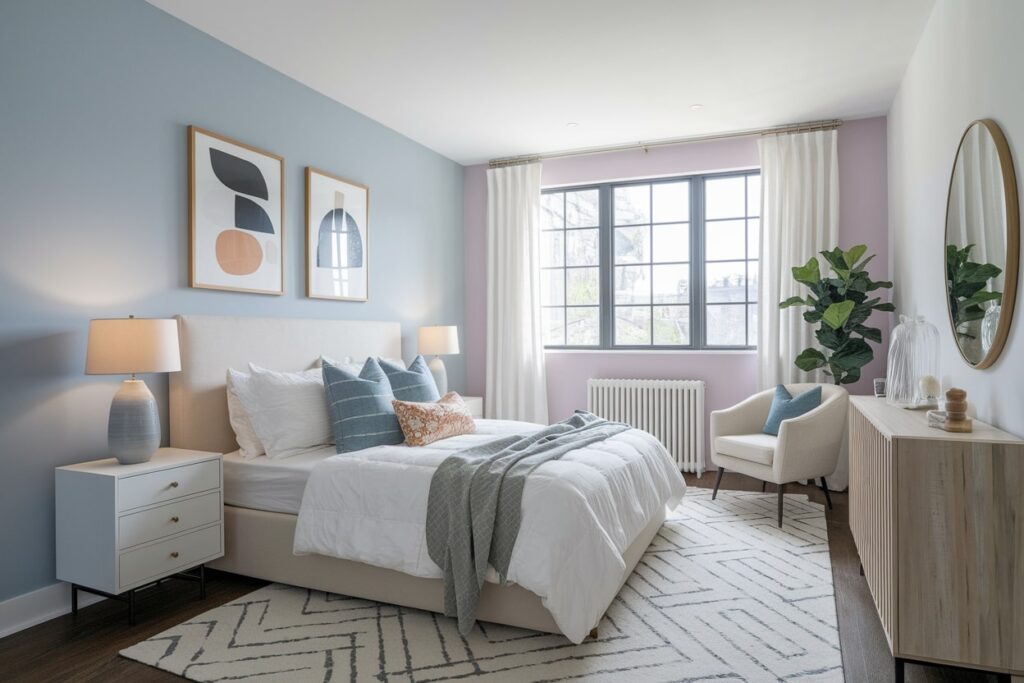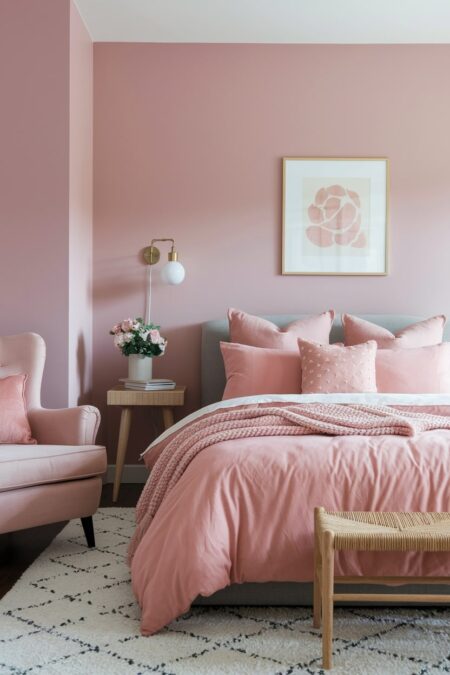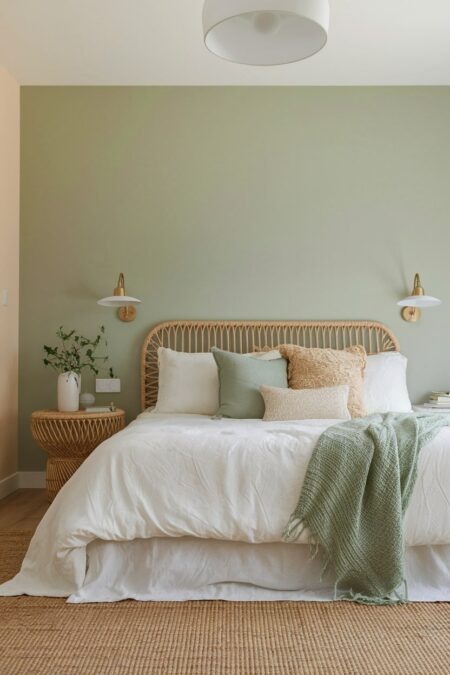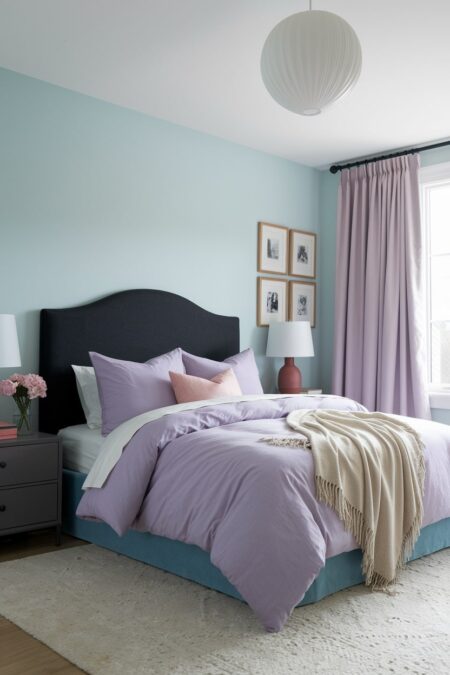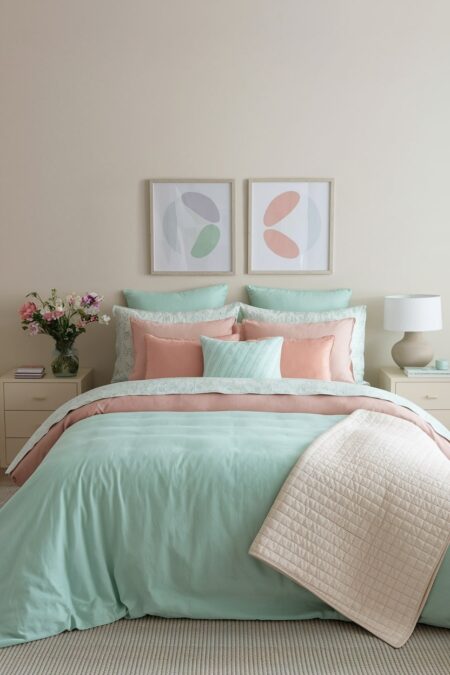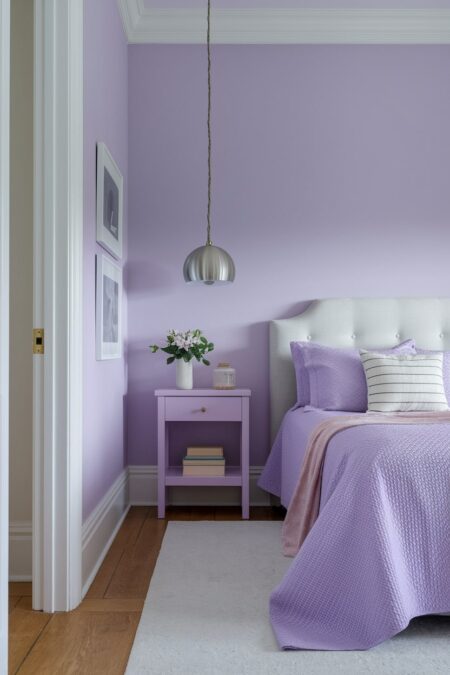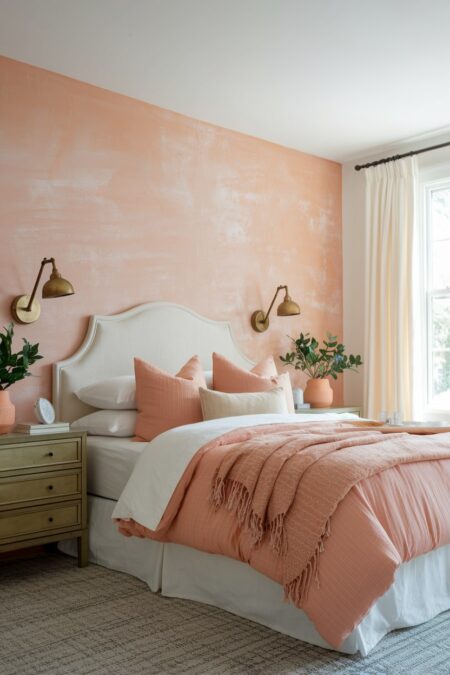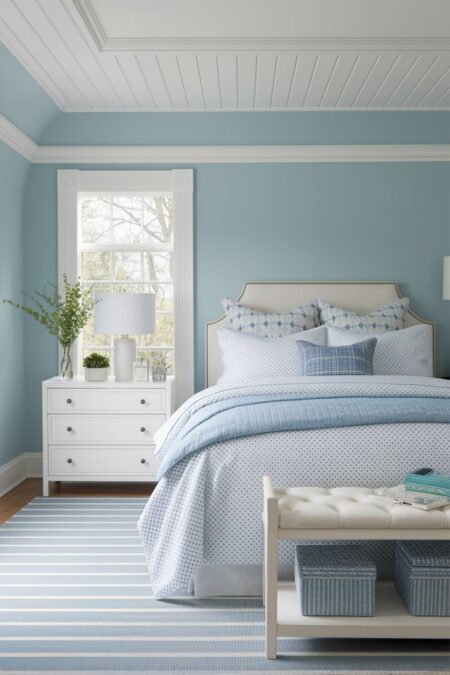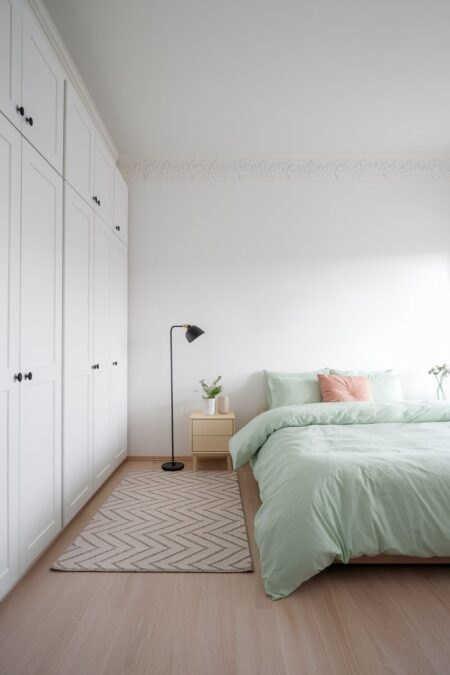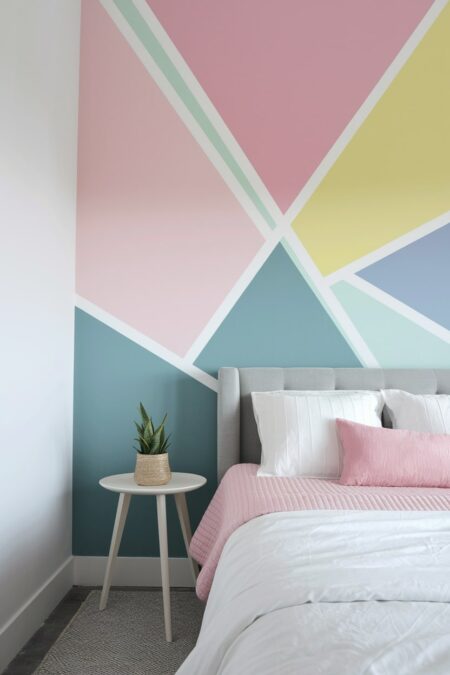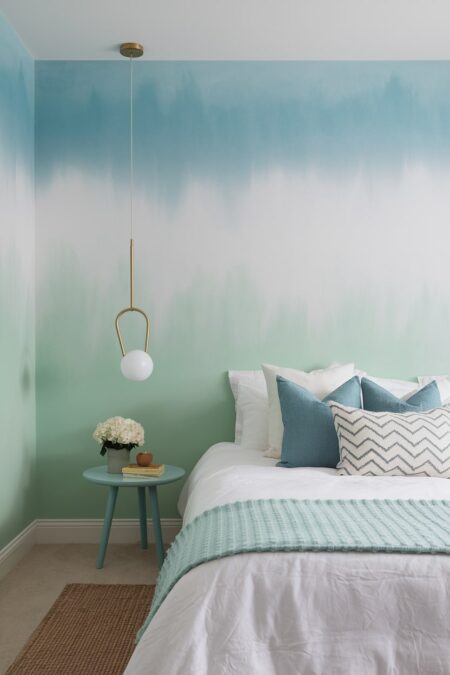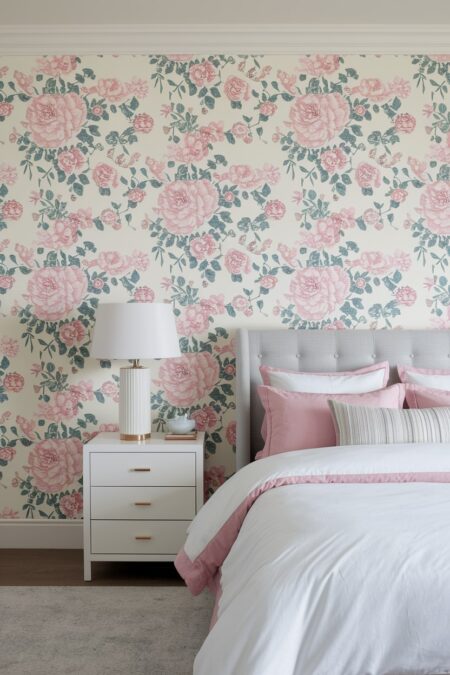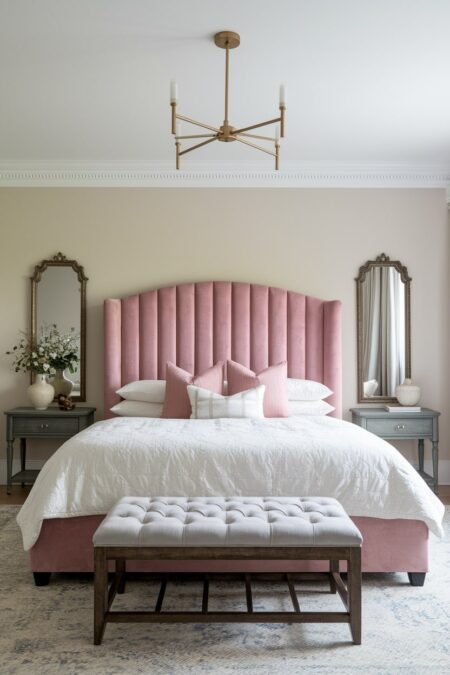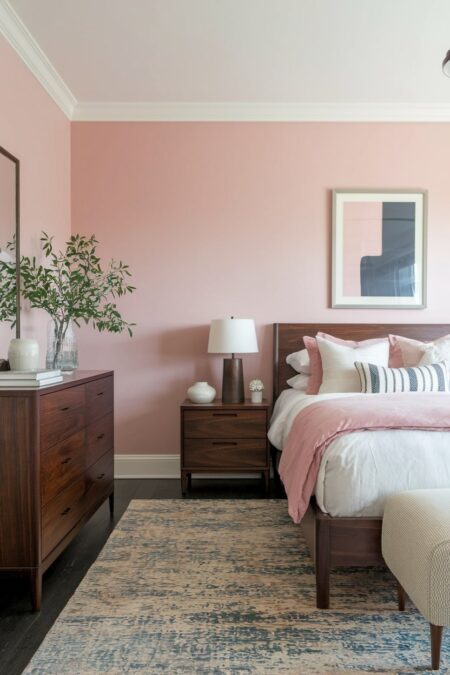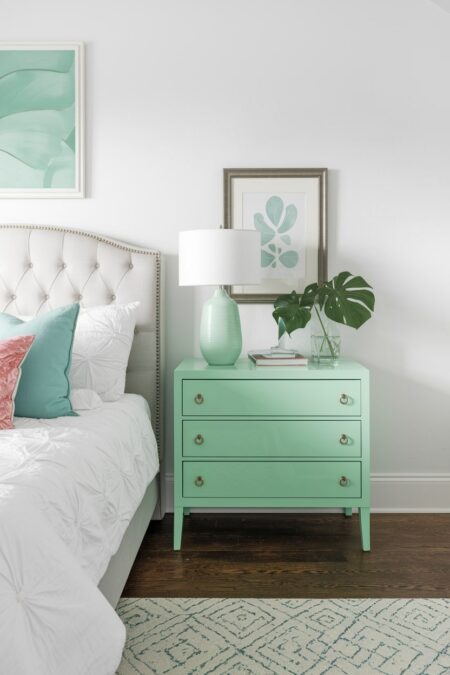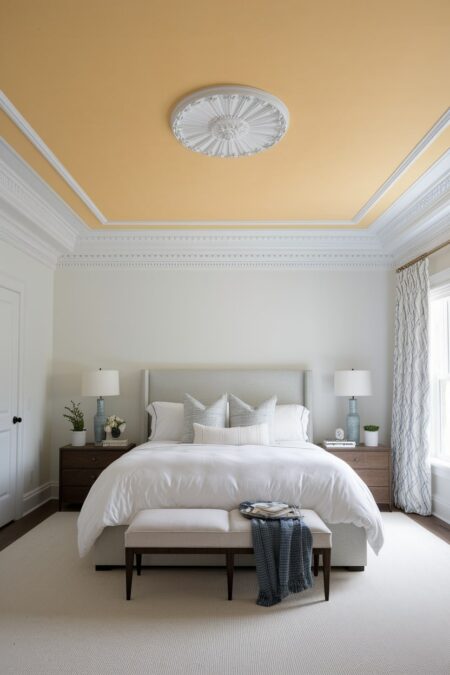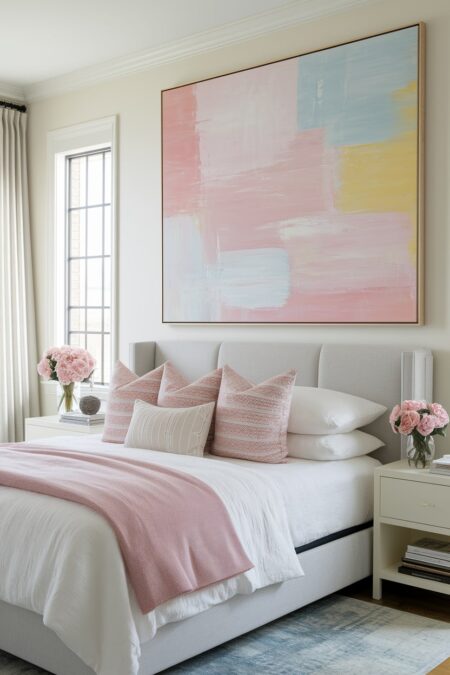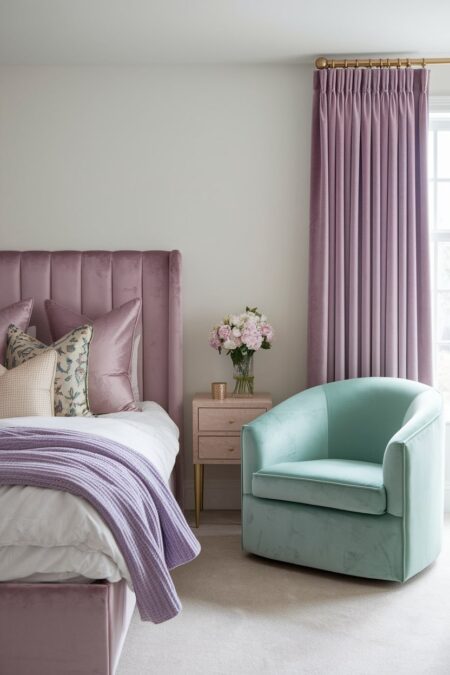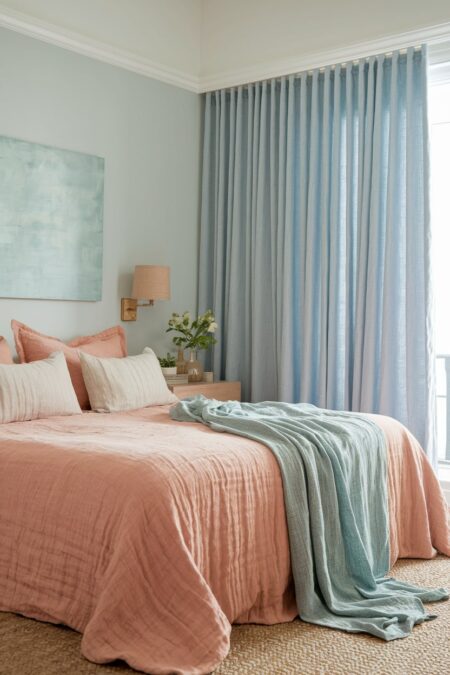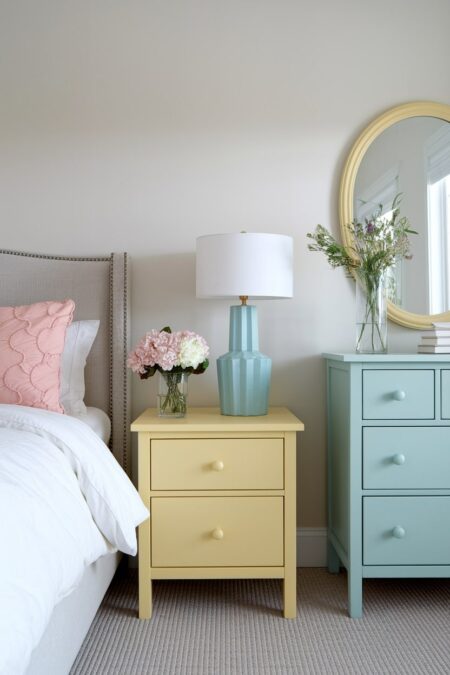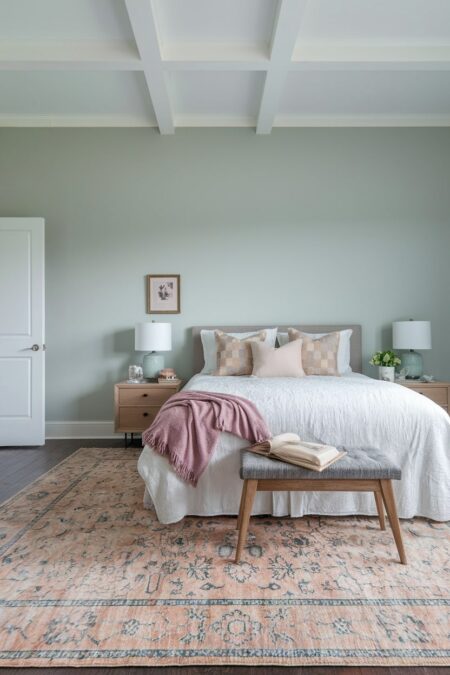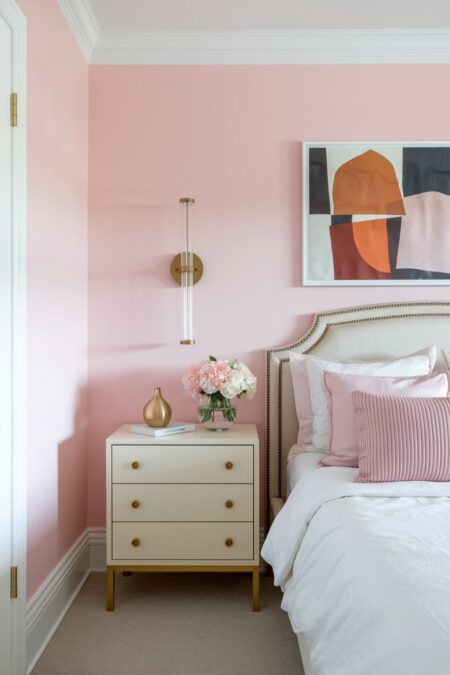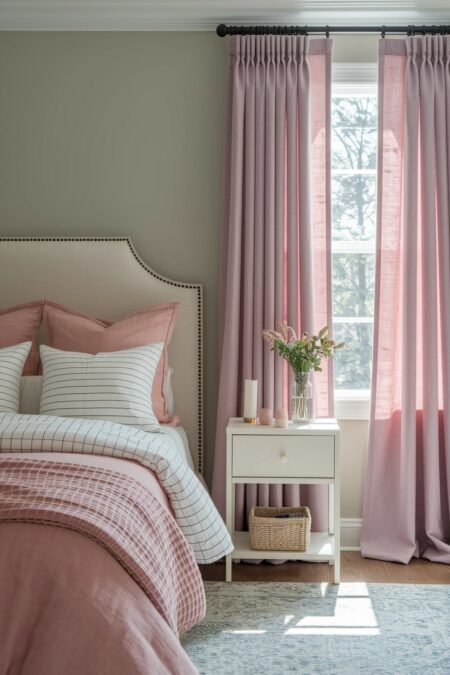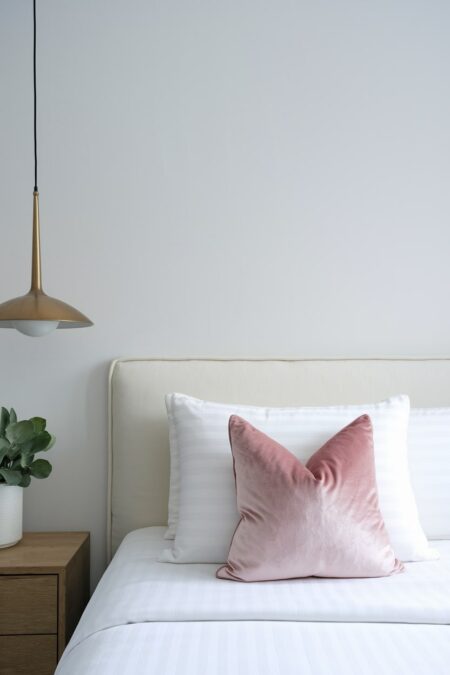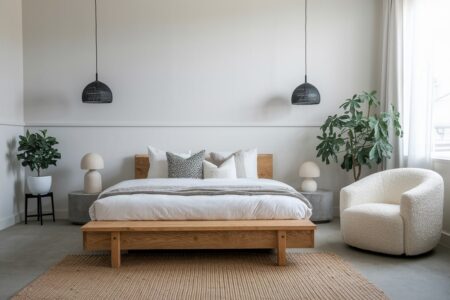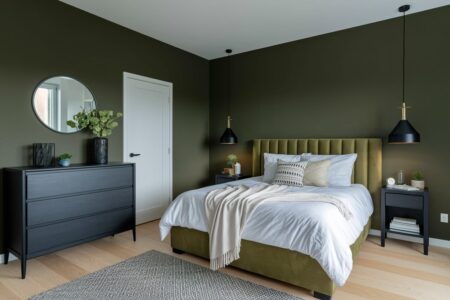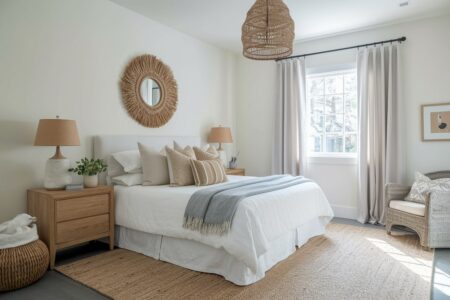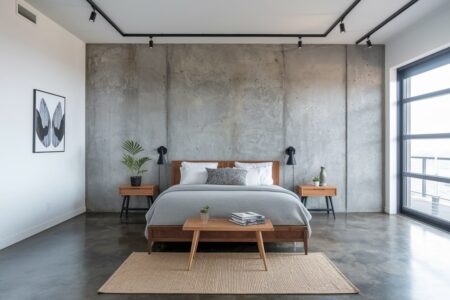Pastel colors have shed their reputation as being reserved for nurseries and have emerged as a sophisticated palette for creating serene, stylish, and deeply personal adult sanctuaries. These soft, muted hues possess a unique ability to feel both calming and uplifting, making them an ideal choice for the bedroom — a space dedicated to rest and rejuvenation. Whether your style is minimalist, bohemian, or classic, there is a pastel approach to suit your aesthetic. This guide explores distinct ideas for incorporating these tranquil tones into your bedroom design, offering practical ways to transform your space into a restful retreat.
-
01 of 23
Monochromatic Blush Layers
Embrace the soothing power of a single color by layering various shades of blush pink. A monochromatic scheme creates a cohesive and immersive environment that feels intentionally designed. Start with a soft, dusty rose on the walls and introduce deeper, more saturated blush tones through your bedding, throw pillows, and an upholstered armchair.
To give this look depth and prevent it from feeling flat, focus on incorporating a wide range of textures. Combine a smooth cotton duvet with a chunky knit throw, velvet cushions, and a high-pile rug. This textural variation will catch the light in different ways, highlighting the subtle differences in your chosen blush palette.
-
02 of 23
Subtle Sage Accent Wall
For those who prefer a more grounded and nature-inspired aesthetic, a sage green accent wall is an excellent choice. This muted, earthy pastel brings the calming essence of the outdoors inside without overwhelming the space. It pairs beautifully with natural materials like light oak, rattan, and linen.
Select the wall behind your headboard to create a natural focal point. Keep the remaining walls a warm off-white or a very light cream to maintain a bright and airy feel. This approach provides a significant color impact while ensuring the room remains a versatile canvas for other decor elements.
-
03 of 23
Sophistication with Pastel and Charcoal
Create a striking yet balanced design by pairing soft pastels with a deep, grounding neutral like charcoal gray. The contrast between a light powder blue or a soft lilac and the richness of charcoal adds a layer of modern sophistication. This combination moves pastels into a more mature and dramatic territory.
A charcoal gray upholstered headboard or bed frame can anchor the room, allowing for pastel bedding and curtains to truly shine. Alternatively, paint the walls a soft pastel and introduce charcoal through smaller elements like lampshades, picture frames, and a decorative throw blanket for a more subtle contrast.
-
04 of 23
Layered Pastel Bedding
If painting walls feels like too much of a commitment, concentrate the pastel theme on your bed. The bed is the centerpiece of the room, and dressing it in a curated collection of soft hues can completely redefine the space’s atmosphere. Mix and match pillowcases, sheets, and duvet covers in complementary pastels like mint green, soft peach, and sky blue.
For a harmonious result, choose colors with a similar saturation level — all soft and muted, or all slightly more vibrant. To unify the look, add a solid white or cream quilt folded at the foot of the bed. This provides a neutral break for the eye and adds an extra layer of comfort.
-
05 of 23
Ethereal Lavender Escape
Lavender is a shade renowned for its calming properties, making it a perfect candidate for a restful bedroom. Unlike brighter purples, this muted, gray-toned pastel creates an ethereal and dreamlike quality. Use it on all four walls for a fully immersive experience that promotes relaxation.
To keep a lavender bedroom from feeling too one-dimensional, pair it with crisp white trim and light-colored wood flooring or furniture. Touches of brushed silver or chrome in lighting fixtures and hardware will add a contemporary edge that complements the cool undertones of the lavender.
-
06 of 23
Warmth with Peachy Tones
Infuse your bedroom with a soft, welcoming glow by using shades of peach and apricot. These warm pastels are inviting and cozy, making them ideal for creating a space that feels like a warm embrace. A feature wall in a textured peach limewash or other wall painting technique can add incredible depth and a touch of rustic charm.
Peach pairs wonderfully with cream, terracotta, and natural brass accents. Consider brass reading sconces on either side of the bed or a statement chandelier to enhance the warmth of the color palette. Sheer cream curtains will allow natural light to filter through, amplifying the room’s gentle radiance.
-
07 of 23
Classic Powder Blue Tranquility
There is a timeless appeal to a powder blue bedroom. This classic pastel evokes a sense of peace and tranquility, reminiscent of a clear morning sky. It is exceptionally versatile, working well in design styles ranging from coastal and traditional to modern minimalist.
For a crisp, clean aesthetic, combine powder blue walls with white furniture and trim. To add visual interest, introduce subtle patterns through a striped blue-and-white rug or a gently patterned duvet cover. This creates a serene yet dynamic space that feels both fresh and classic.
-
08 of 23
Scandinavian-Inspired Simplicity
The Scandinavian design style, with its emphasis on simplicity, light, and functionality, provides a perfect framework for using pastels. Start with a foundation of white walls and light wood floors. Then, introduce a single pastel, such as a pale mint green or a soft butter yellow, through key pieces.
This could be a pastel-colored duvet cover, a simple geometric area rug, or a pair of minimalist nightstands. The key is restraint; the pastel should be an accent that enhances the serene, uncluttered environment rather than dominating it. Black metal accents, such as a floor lamp or picture frames, can add a touch of modern graphic contrast.
RELATED: 18 Scandinavian Bedroom Ideas: Simple and Functional
-
09 of 23
Modern Geometric Color Blocking
For a more contemporary and playful approach, use pastels in a color-blocked design on a feature wall. Use painter’s tape to create large-scale geometric shapes, such as triangles, rectangles, or intersecting arches, and paint them in two or three complementary pastel shades.
This technique transforms a simple wall into a piece of custom art and serves as a dynamic backdrop for a minimalist bed frame and simple furniture. To execute this cleanly, choose a high-quality tape and peel it off while the final coat of paint is still slightly damp to ensure crisp lines.
-
10 of 23
Gradual Ombré Wall
An ombré wall, where one color gradually fades into another, can create a stunning and unique effect in a pastel bedroom. A transition from a soft sky blue at the ceiling down to a pale seafoam green near the floor can evoke a tranquil, watercolor-like atmosphere.
This effect requires some painting skill and patience, often involving blending the colors with a dry brush or sponge while they are still wet. The result is a soft, dreamy focal point that adds a significant amount of custom character and visual intrigue to the room.
-
11 of 23
Vintage-Inspired Pastel Florals
Channel a sense of romance and nostalgia by incorporating a vintage-inspired floral wallpaper in a pastel colorway. Look for patterns with soft, faded roses, peonies, or other botanicals on a cream or pale background. This is a wonderful way to add pattern and personality.
To keep the look feeling fresh and not overly dated, pair the floral wallpaper with modern, clean-lined furniture. A simple, unadorned bed frame and contemporary lighting will create a beautiful juxtaposition between old and new, allowing the vintage pattern to feel both charming and relevant.
-
12 of 23
Plush Pastel Headboard
Make a statement by choosing an upholstered headboard in a luxurious pastel fabric like velvet or bouclé. A channel-tufted headboard in a dusty rose or a wingback design in a soft seafoam green can serve as the primary source of color and texture in an otherwise neutral room.
This approach allows you to experiment with a bold color choice on a single, impactful element. Build the rest of the room’s palette around this centerpiece, pulling softer tones of the same color for throw pillows or a piece of art to create a cohesive design.
-
13 of 23
High-Contrast with Dark Wood
Juxtapose the softness of pastels with the richness of dark wood furniture for a sophisticated and slightly moody aesthetic. A walnut or mahogany bed frame, dresser, and nightstands will ground the space and provide a dramatic contrast to pale pink, mint, or blue walls.
This combination works because the depth of the wood enhances the lightness of the pastel, making it appear more vibrant. To tie the elements together, look for textiles or artwork that incorporate both the dark and light tones from your chosen palette.
-
14 of 23
A Refreshing Hint of Mint
Mint green is a crisp and refreshing pastel that can make a bedroom feel clean, airy, and revitalizing. It’s a versatile shade that can lean either retro or modern depending on what it’s paired with. For a contemporary look, combine mint with bright white and touches of light gray.
Consider painting a vintage dresser or a set of nightstands in a high-gloss mint lacquer for a playful pop of color. This is a fantastic way to upcycle an old piece of furniture and introduce a specific pastel hue without committing to painting the entire room.
RELATED: 19 Colors That Go With Mint Green: Interior and Exterior
-
15 of 23
Unexpected Painted Ceiling
Draw the eye upward and create a truly memorable design moment by painting the ceiling a soft pastel color. A pale, buttery yellow or a barely-there blue on the ceiling can make the room feel larger and more expansive, mimicking the effect of an open sky. This is often referred to as the “fifth wall.”
Keep the walls clean, neutral white to allow the ceiling to be the star. This unexpected placement of color is sophisticated and subtle, adding a custom-designed feel to the space. It works particularly well in rooms with high ceilings or interesting architectural details like crown molding.
-
16 of 23
Art as the Pastel Centerpiece
If you prefer to maintain neutral walls, use a large piece of abstract art as your primary source of pastel color. A significant canvas featuring swathes of soft pinks, blues, and yellows can serve as the inspiration for the entire room’s color scheme.
Pull colors directly from the artwork to select your bedding, accent pillows, and decorative objects. This ensures a cohesive and professionally curated look, where every element feels connected to the central artistic statement.
-
17 of 23
Luxe Velvet Pastel Accents
Introduce a sense of luxury and tactile richness by incorporating velvet in pastel shades. Even in a mostly neutral room, a pair of dusty rose velvet curtains, a lavender velvet throw blanket, or a mint green velvet accent chair can add instant glamour and comfort.
Velvet’s subtle sheen enhances the richness of pastel colors, making them appear deeper and more saturated. It’s an ideal material for adding a touch of opulence and creating a cozy, inviting atmosphere perfect for a bedroom.
-
18 of 23
Relaxed Washed Linen Textures
For a more casual, bohemian, or coastal aesthetic, embrace the beauty of washed linen in pastel hues. The naturally relaxed and slightly rumpled texture of linen adds a layer of effortless comfort. Think of bedding in a soft, sun-bleached peach or curtains in a pale, airy blue.
Layering different pastel linens creates a soft, breathable, and inviting bed that looks as good as it feels. This material choice is less about formal perfection and more about creating a comfortable, lived-in sanctuary.
-
19 of 23
Mismatched Painted Furniture
Inject personality and a touch of eclectic charm by painting different pieces of furniture in complementary pastel shades. A nightstand in a soft yellow alongside a dresser in a pale blue, both set against a neutral wall, can create a cheerful and unique design.
To ensure the look feels cohesive rather than chaotic, stick to a limited palette of two or three pastels. Using the same finish — such as a chalk paint or a satin lacquer — on all the pieces can also help to unify the mismatched colors.
-
20 of 23
Pastel Rug as an Anchor
Ground your entire bedroom design with a large area rug in a beautiful pastel color or pattern. A rug can define the space, add softness underfoot, and introduce color and pattern in a significant yet manageable way. A vintage-style Persian rug with faded pastel tones or a modern geometric rug in soft hues can both work beautifully.
When selecting a rug, ensure it is large enough to extend at least two feet on either side of the bed. This will make the room feel more expansive and properly anchored. The rug can then serve as the foundation for the rest of your pastel color choices.
-
21 of 23
Glamour with Golden Accents
Elevate your pastel bedroom by pairing the soft colors with the warm, reflective quality of brass or gold metallic accents. The combination is inherently glamorous and sophisticated. A pastel pink wall provides a stunning backdrop for a gold-framed mirror or brass wall sconces.
Small touches can make a big impact. Consider swapping out standard drawer pulls on a dresser for elegant brass hardware, or placing a simple gold vase on a nightstand. These metallic elements catch the light and add a touch of warmth that beautifully complements the pastel palette.
-
22 of 23
Light-Filtering Pastel Curtains
Control the light and add a soft wash of color to your bedroom with sheer or light-filtering curtains in a pastel shade. When the sun shines through, the curtains will cast a gentle, colored glow across the room, enhancing the overall calming atmosphere.
Choosing a fabric like a lightweight linen or a simple cotton voile in a pale blue, pink, or green will maintain an airy, open feeling while still providing privacy. This is a softer alternative to heavy, opaque drapes and contributes to the serene quality of the space.
-
23 of 23
Minimalist Pop of Color
For true minimalism, a pastel bedroom doesn’t require painting all the walls. Instead, maintain an almost entirely white or light gray room and introduce a single, deliberate pop of pastel. This could be a single abstract art print, one solitary velvet pillow on the bed, or a ceramic lamp base in a soft, sculptural shape.
This highly intentional use of color makes the chosen pastel element a powerful focal point. The surrounding negative space amplifies its impact, proving that even a small dose of a soft hue can have a profound effect on the mood and style of a room.
